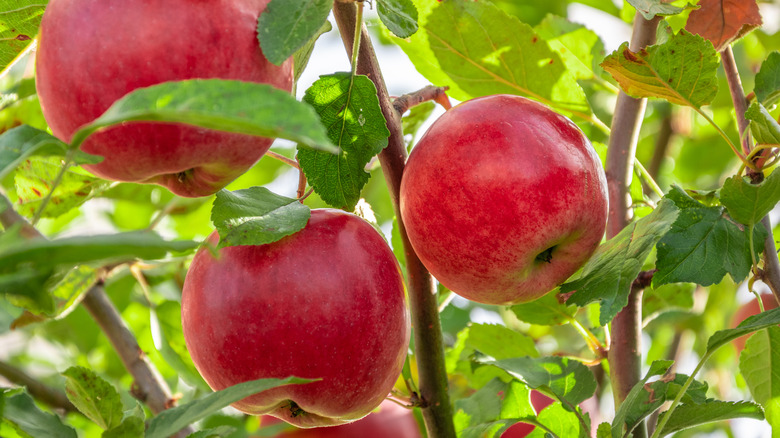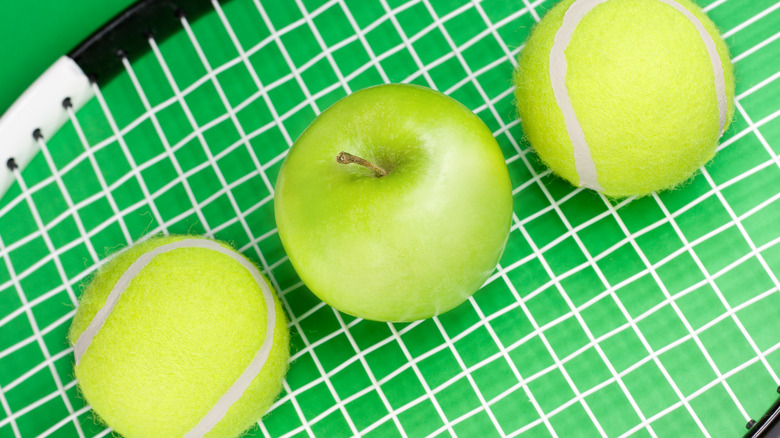How To Easily Pick Out A Pound Of Apples Without A Scale
We all know the saying: "An apple a day keeps the doctor away." Yet, the average medium-sized apple weighs only a fraction of a pound, per Healthline, so imagine what a whole pound of apples could accomplish! It goes without saying that these red and green fruits are nutritious and delicious. They're so popular they were among the top five most consumed fruits in the U.S. last year (via Statistica). If you happen to like them apples too, odds are you'll be buying some sooner rather than later.
Let's say you've picked out an applesauce recipe and you've visited the grocery store to pick up ingredients. You then realize the recipe lists the amount of apples you need in pounds, not quantity. A lot of shops actually sell fruits by weight, and may even have handy scales set out for customer use. But what if you find yourself without a scale? Perhaps you're at an outdoor farmers market instead of a fully equipped supermarket. It turns out, there's still an easy way to get a pound of apples, no equipment needed.
Just grab three medium-sized apples
The trick is simple: Find a trio of apples, and you've likely got yourself a pound (via The Kitchn); just make sure they're not too small or large. Apples can be tiny, like the Tiddly Pomme (via Guinness World Records), or huge, like the Hokuto (via Kidadl). Many of the most well-known apples are medium-sized, such as the Fuji, Granny Smith, and Red Delicious varieties, among others, and those are the ones you'll want. If you require more than a single pound, simply multiply by three. If you need five pounds, get 15 medium apples. Maybe get 16 to be safe — you can always find use for a spare piece of fruit.
Don't feel like you need to memorize an exhaustive list of medium-sized apple types, though! Here's an even easier way to determine if your fruit is the right volume: Hold it in your hand. If it fits comfortably in the palm, then it's the correct size. Want to eliminate all uncertainty and account for varying hand sizes? Imagine a tennis ball — around 2.5 inches in diameter (if you want International Tennis Federation approval). Does it match the size of your selection? Then it's the apple of your eye, and you're good to go! It's as easy as a certain type of pie.

